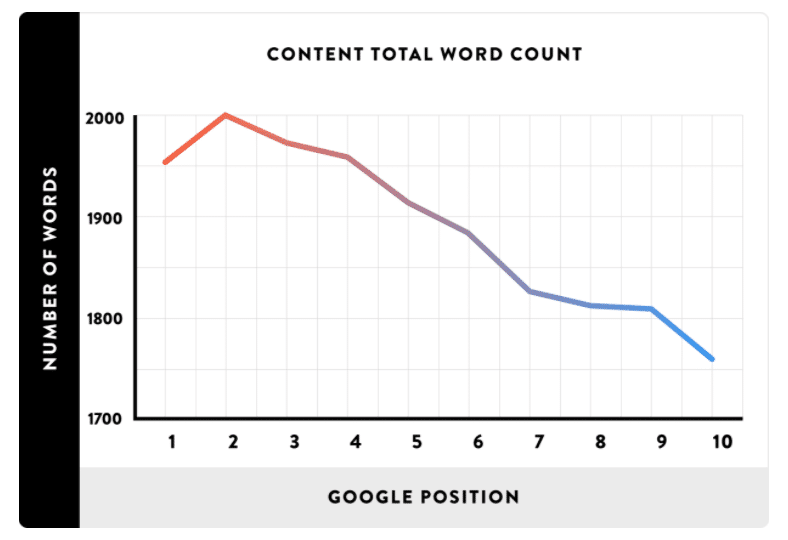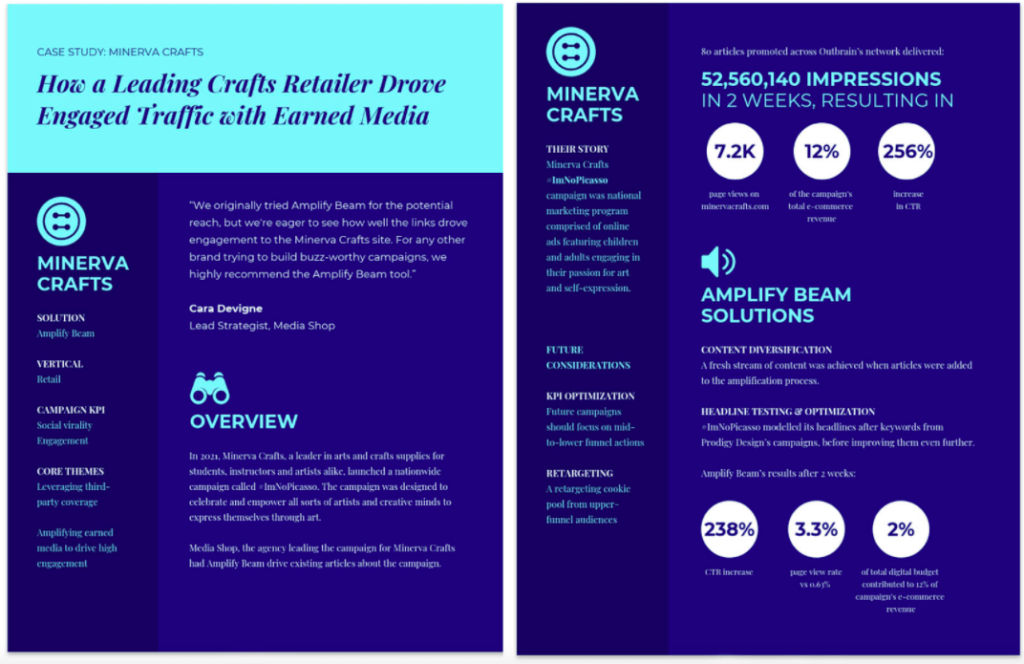🔥 FLASH SALE: Blog to Video is HERE! Plus Analytics AI & Chat Builder. Only 1 licenses left 👉 Claim Your Lifetime Deal!
What is Long-Form Content and Why Do You Need it for 2024?

Your content strategy can take on many forms. Writing long-form content is a tactic that certain industries depend on.
What is long-form content and does it work? At Bramework our business is to know blogging and what works best. We believe that there are many strategies that will help grow you or your agency and they all surround content.
We’re going to take a deep dive into writing longer content, the power of extra words and how to optimize this for lead conversion. If you are looking at taking a different approach to your content, keep reading.
Long-Form Content and it’s Benefits
Let’s first find out what long-form content is and how it can benefit us.
According to core dna, long-form content is between a short story (under 7,500 words) and a novelette (under 17,500 words) in length. In the content marketing world for your website, this is any content that is over 2,000 words. There are many benefits to writing longer articles.
Check out this word count chart detailing the correlation for ranking in Google from HubSpot:

Here are some benefits of writing long-form content:
- It improve the search engine rankings for your content or blog
- It increases the reader to engage and also helps time on page for SEO
- It increases the engagement and more social shares
- It builds authority for your brand or agency
- It gives you the ability to link out more which creates more partnerships and referral relationships
- It gives you the ability to provide more educational content to your audience which builds trust
- It offers more backlink opportunities to build trust in the search engines
- It leaves more room for engaging CTAs, which lead to more conversions
- It gives you the ability to create more repurposed content for future posts
- It encourages more conversations and commentary on your blog
Long-form Content Examples
There are many types of long-form content that can provide various benefits. It’s important that you know all the different types so you can choose the best one that suits your industry.
As an agency owner or a freelancer, these types of long-form content take time and dedication to complete. Here are some examples of long-form content that may benefit you:
- Case study – a professional write up of a happy client, showcasing the struggle and solution your brand provided.
- White paper – a longform blog article that serves an in-depth resource or solution.
- E-Book – a gated downloadable piece of content that typically solves a long-term problem or is a step-by-step guide.
- Definitive guide – a downloadable resource for a tutorial or walkthrough to a solution.
- Annual year in review – a blog article or newsletter that you post annually, showcasing your brand’s growth and challenges.
- Roundups and reviews – lists of referral partners or resources you use and can review for your audience.
- Brochures or datasheets – these can come in the form of slide decks, one-pagers or infographics, to help your audience understand your services or products.
The important question to take away from this list is this: which one of these pieces of long-form content will generate the most leads for my brand?
We are going to go through each long-form content example and show you what they are along with how you can use them to better your brand. There are some tips and tricks we’ve learned that may help you as well.
Here we go!
Case Study
Case studies are a great style of long-form content that can really drive the needle.
It’s important to understand what to include in your case study, how to present it and the format to follow in order to increase organic reach. But first, let’s define it.
A case study is a research method involving an up-close, in-depth, and detailed examination of a particular case or customer. The goal is to show the problem and solution in the study.
A case study is an excellent way to showcase your work with a “proof is in the pudding” strategy. There is nothing quite like showing the result of your work from a successful partnership. The length of a case study can be from 500-1,500 words. Our advice would be to tell the story that works for both you and your case study participant.
HubSpot put together a few great posts on their own case studies including how the Rock and Roll Hall of Fame grew their audience by 81%.
Here’s a great example of a fun case study by VennGage:

Creating even one case study can increase your lead conversion by 12-15%, if it’s done correctly.
As promised, we have put together the flow and format of a case study for you to follow easily. Use any tool you’d like to create a visually stunning case study, just be sure it’s branded and personalized. Here’s a quick sequence to follow when crafting the perfect case study:
- The Customer Bio: A short description of the customer and their company.
- The Struggle: The customer and their company struggle that requires your help.
- The Attempt: The steps the customer took to solve the problem without success.
- The Connection: The connection between yourself and the company.
- The Solution: The product or service you will integrate to solve their problem.
- The Quote: A branded or personalized quote from the company on how the solution you provided helped them.
- The Results: Detail how your product or service helped the company and how your partnership still grows with the company.
PRO TIP: Use the Bramework app when creating your case study to find out the top questions people are asking about case studies.
Create SEO-Optimized Blog Posts with First Draft PRO in Minutes!
👋 Say Goodbye to Endless Hours of Research and Writing
White Paper
A white paper is an in-depth report about a topic and the issues around it. Its purpose is to educate readers and help them to understand and solve a problem. It serves as an example of a long-form piece of content that brings value to your audience.
Typically, the purpose of a white paper is to influence the decision-making processes of current and prospective customers by offering them both sides of the equation, unbiased.
Step 1: Do your research! Your first step when creating a white paper would be to check out the Bramework blog builder and ask the top questions of what people would like to know. You can also use the keyword analyzer to see how it ranks in the search engines, along with volume and competitive rank.
Step 2: Format properly. You can use a tool like the Bramework blog builder to create a document flow. You will want to highlight both sides of the problem with proper citations, references and historical data. Always have a beginning, middle and end. Conclude with both sides of the story!
Step 3: Share it! Be sure to edit it properly and when it’s time to share, do it with pride. You’ve produced a beautiful piece of long-form content, this should be displayed everywhere your brand lives.
Here is a sample of a white paper from Google that highlights Google Cloud Platform security. Notice how it has topics and subtopic headers outlined evenly, no images and internal/external links embedded. Google knows best!
E-Book
Everyone loves a good ebook! We a big fans of ebooks and all the value it brings your audience here at Bramework!
An ebook is a piece of long-form content presented in a format that allows it to be read on a computer or handheld device. The purpose of an ebook can range from educational content like tutorials to fan fiction. It is a great opportunity to incorporate gated content like a CTA in your blog.
An ebook is considered a larger project and may take up to a month to complete. You’ll want to include relevant facts, tools and tutorials so the reader really gets answers.
Here is the Bramework ebook we created just for you!
Here are a few tips on writing your ebook that can help speed up the process:
- Use ebook tools to help like Canva, Bramework Blog Builder or Google Drive
- Format the ebook with a table of contents
- Draft the ebook like a blog
- Offer insightful, educational and non-bias advice in the ebook
- Include a CTA (call to action)
- Link to influencers and partners
- Get a second pair of eyes on your ebook as you edit
- Follow up after it’s downloaded
- Track the data
- Repeat quarterly if you can

🔍 Find Keywords That Actually Drive Traffic
Stop guessing and start ranking. Discover high-value keywords, analyze trends, and dominate your niche free and fast.
Definitive Guide
You’ve heard of the definitive guides out there…they are supposed to be the all-encompassing guide to everything needed to learn that one topic.
It’s important to know your sources when you are creating a definitive guide. You must be the expert on that topic when creating these long-form pieces of content.
Some rules to writing a definitive guide are:
- Have a purpose
- Choose your keywords
- Check the competition
- Target your audience
- Include statistics like case studies and white papers
- Create actionable links and CTAs
- Format and create visual graphics
- Share on your social platforms and website
Here is a great example of an ultimate guide brought to you by the team at Bramework:
An ultimate guide is a great source of long-form content that you can create as an expert in your field.
Annual Year in Review
If you are an agency owner or starting out, you may want to start your annual year in review.
This style of long-form content typically takes place at the end of a fiscal or financial year. It is meant to share the growth, successes and failures of a business or brand owner. The point of it is transparency. There are typically four steps to an annual year in review.
Step 1: Share your milestones. Share the goals you’ve achieved this year. This can range from small goals that you did yourself or larger milestones that took a team to achieve. Be specific! It’s okay to share the actual numbers here (if they are good!)
Step 2: Share your failures and growth. This is your chance for humility and transparency. Both are great qualities for a team to share. Your failures will always have a growth curve at the end, where you share what you learned from it and how you’ve grown.
Step 3: Evaluate your team and current status. This can take on many shapes. You can write about how you’ve changed, evolved or pivoted here. Share the team growth, the expansion of services, your partnerships you’ve made and how that’s helped you.
Step 4: Share your goals for the new year ahead. Time to look towards the future! Write your new goals for the upcoming year, small or large. Be sure to include your gratitude here. A personal thank you goes a long way to those that were involved in your success.
Here’s an awesome example of an Annual Year In Review post by Media Play News:
Roundups and Reviews
We know what reviews are… but what’s a roundup? It’s an extremely long list of products, services or companies that are being compared.
Creating a roundup of companies, products or services to review is an excellent long-form content strategy. When you write a long list of reviews, it’s important that you stick to the statistics and leave any bias opinions aside.
At Bramework, we work with a lot of tools and have experience reviewing each. When you write a review, you will need to provide useful constructive feedback, talk about a range of elements, be detailed and leave out personal commentary.
Here’s a great example of a roundup of blogging tools that we put together:
When you write a long list of reviews, you have the opportunity to link out more. This increases your chances of visibility and reach.
Brochures and Datasheets
Creating a brochure is a great way to showcase your product or service in a stylistic way! As long-form content goes, it is more on the sales and marketing material side, however, it can be used as a data sheet as well.
A brochure is typically in print. It’s an informative document that can be folded into a template, pamphlet, or leaflet. A brochure can also be a set of related unfolded papers put into a pocket folder or packet. There are digital options, but most of these are turned into white papers, case studies or just a service write up.
A datasheet (or data-sheet) is a document that summarizes the performance and other characteristics of a product, machine, component, material, subsystem, or software in sufficient detail.
Each brochure and datasheet will be different as each industry varies. Our advice is that you make it visually pleasing to the eye with creative graphics. Stay true to your brand and be crystal clear. A nice brochure can lead to a lot of nice conversions!

Bramework Wrap Up: Long-form Content Strategy
We know that long-form content takes time to write!
That’s why we created Bramework in the first place – to help you save time and write better. If you are interested in streamlining your long-form content writing process check out our blog builder.
We hope you enjoyed this article and attempt long-form content writing as your new strategy! Try these tips for long-form content writing and let us know how you did! We are always happy to hear from you.
Happy writing!
Image credit: unsplash.com, bramework.com
(Original Article Date: November 22, 2021/Updated October 22, 2022)
🎓 Join the Ultimate Blog Ranking Academy!
Unlock the Secrets to a $10,000 per-month Blogging Income





Valuable information. Lucky me I discovered your site by
chance, and I am surprised why this accident did not took place in advance!
I bookmarked it.